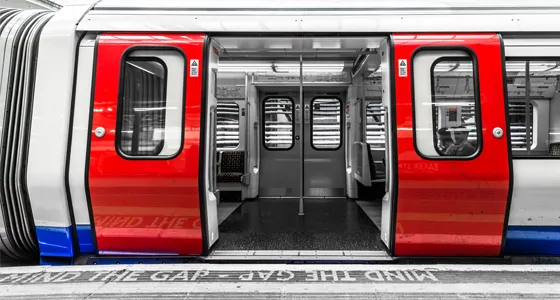Your Genesys Blog Subscription has been confirmed!
Please add genesys@email.genesys.com to your safe sender list to ensure you receive the weekly blog notifications.
Subscribe to our free newsletter and get blog updates in your inbox
Don't Show This Again.

Anyone who rides the London Underground is very familiar with the automated announcement, “Mind the Gap.” First adopted in the late 1960s and still played in stations across greater London, the concise message warns passengers to be careful when crossing the gap between trains and platforms.
Unfortunately, companies with outdated, voice-centric contact center solutions aren’t nearly as effective as London’s public transportation system when it comes to cautioning customers about gaps. Rather, they’re creating big challenges due to gaps between their self-service and assisted-service channels. In fact, one of the weakest points today in customer journeys is this gap. It’s where customers can become frustrated and even decide to make a switch to a competitor.
When many of us think of self-service, IVR comes to mind. Yet, today’s self-service includes a growing number of digital channels, such as social media, SMS, mobile apps, virtual agents, websites, and more. Customers are turning to their mobile devices and the web for many interactions because they’re fast and convenient. For companies, there are also distinct advantages to offering self-service, including decreased operational costs. The has led to a rapid shift to self-service across nearly every industry. For many companies, digital interactions are already exceeding assisted-service, voice interactions.
Although self-service offers many benefits for both customers and companies, what happens when a customer can’t obtain a resolution to an issue on a self-service channel? This is a make or break moment in the customer experience.
According to the Forrester Report Trends 2016: The Future of Customer Service, 53% of customers will abandon an online purchase if they can’t find a quick answer. In other words, if there isn’t a seamless way to bridge the gap between self-service and assisted-service, the chance of losing a sale or a customer increases dramatically.
Today’s customers expect to be able to shift between self-service and assisted-service with context being maintained. They don’t like having to take extra steps or having to repeat their issue. However, many companies do not have the infrastructure in place to provide this level of service. For example, a customer may begin a journey on a website. When they’re unable to get an answer to their question about a product or service, they need further assistance.
The company that offers a proactive invitation to start an online chat with an agent who has contextual information about the customer’s journey so far is likely to keep that customer engaged. In contrast, the company that simply provides a message to call for further assistance is fracturing the interaction and creating an opportunity for the customer to take their business elsewhere.
As the number of digital channels continues to increase, customer journeys are becoming more complex. The opportunity to slip into a gap between a self-service and an assisted-service channel also increases. To keep your customers and stay competitive, the answer is deploying a customer experience platform that supports omnichannel engagement. It’s not enough to simply continue adding self-service channels. These channels must be integrated so your customers can shift between them while context is maintained.
Want to learn how you can bridge the gap between your self-service and assisted-service channels? Read the Roadmap for Omnichannel Customer Engagement. It’s a practical guide to delivering omnichannel customer experiences that you won’t want to miss.
Subscribe to our free newsletter and get blog updates in your inbox.